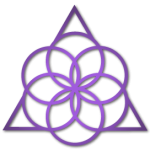Most of the students in Seoul, Tokyo and Osaka Bowspring workshops were women. Collectively, Desi Springer and I shared Bowspring with about 150 women and only 10 men, mostly in their 30’s. Notably, the majority of the students had flat thoracic and cervical spines. Also, many of the women had internally rotated shins. On the streets of Tokyo, pigeon-toed women with internally rotated shins are commonly observed. The women generally have knocked knees (Varus legs) while both standing and walking. This unique structural misalignment, particularly in the legs of Japanese women, is probably due to a mix between hereditary factors from centuries of culturally sitting in sieza (sitting on the heels in a kneeling position – Vajrasana – with the heels outward and the shins turned inward), and a somatic posture reflecting a desire to be kaiwai or cute and girly.
The flatness of the upper half of the spine, particularly in the upper thoracic between the shoulder blades, could be due to a diminishment of inner fullness in the middle of the ribcage by a general cultural attitude of many Asian women to be energetically quiet. With flat thoracic spines, the necks were also in turn generally flat. Their chins were tucked with eyes directed softly downward. Consequently, tight jaws were common among the students in Korea and Japan.
Despite these deeply cultural somatic patterns in the body-mind postures of the Far East students, their inner strength and tenacity to hold the new Bowspring forms while still learning the challenge of engaging the glutes upward, was powerfully inspiring to witness. Desi commented that the mental focus of the Korean and Japanese was the strongest that she had ever seen in a group of yoga students. In just the first day of Bowspring workshop classes in both Korea and Japan, Radiant Heart was clearly filling up hollow thoracic areas and the shoulders and necks were in decent alignment with the bow-spring template. It was remarkable how quickly the students were able to begin to embody the bow-spring.
We believe that Korean and Japanese Bowspring students will be able to tremendously transform their myofascial form within the next year through regular practice of pushing the top of the head back into the fullness of Radiant Heart, while mounding the glutes, and mindfully engaging their feet and knees. With such strong attributes of studentship we are confident that by regular practice of the basic form of the Level 1 Syllabus poses, the Asian students will exhibit measurable changes in the shape of their bodies in just weeks and months.
On the last day of the weekend workshops we pushed the student’s capacity to stay steady and centered under the pressure of the Roots practice. It was so astonishing to observe the mindful strength of these students doing advanced bow-spring forms that they had never seen before. Masa Utsuno, one of the most highly trained and proficient yoga teachers in Japan, took his practice to a whole, new level of focused balance in just 5 classes with us in Osaka. He was able to do a one-legged drop-back in slow motion by learning the bow-spring in just 2 days! Masa-san was elated since he had been working on performing that pose for the past 3 years to no avail.
We will be supporting the continued learning of Bowspring in Korea through our sweet friends at Inside Yoga, and in Japan through the honorable Kenta-san and his Hot40Yoga studios.

